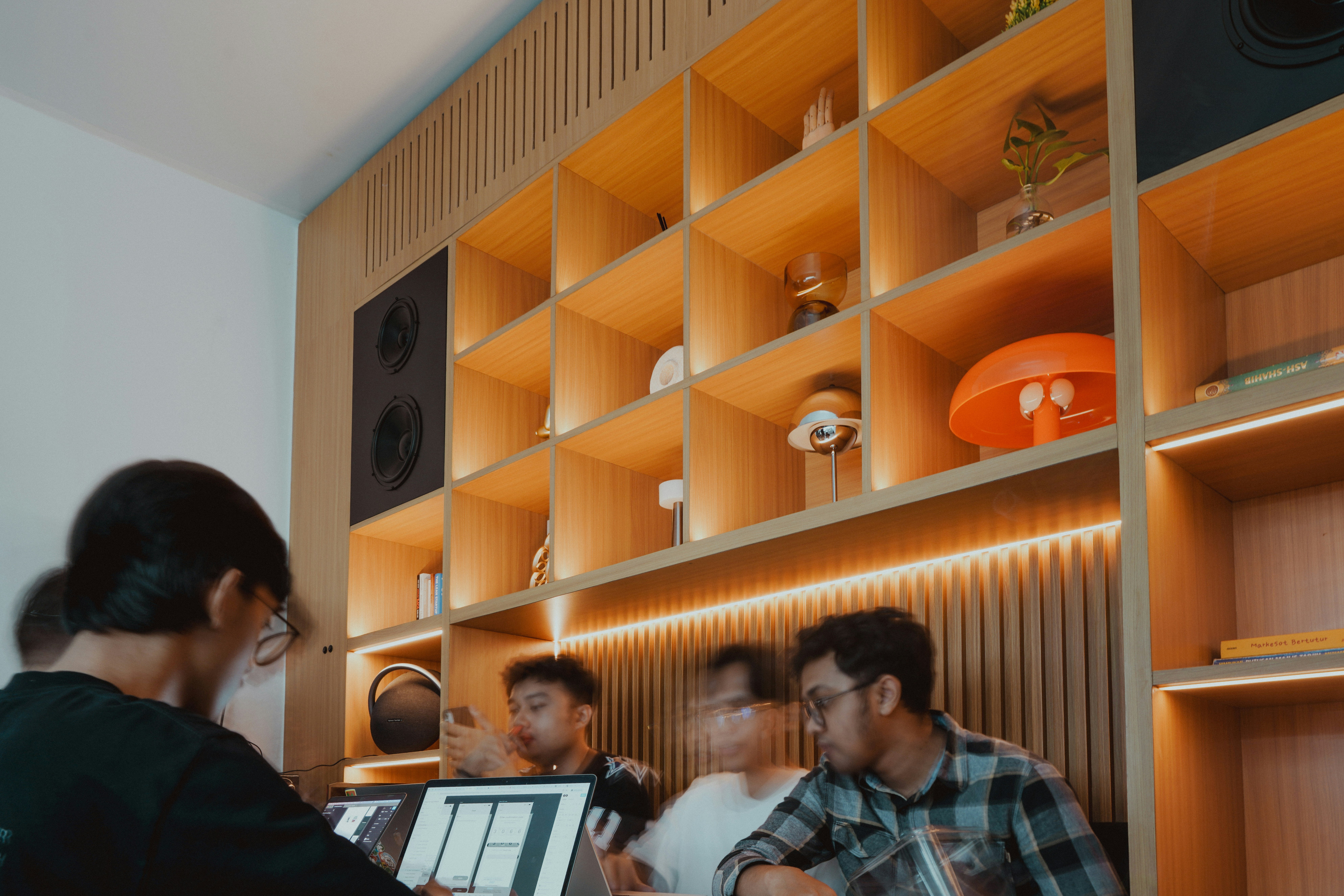Specify, procure, prototype, collaborate, and analyze at scale. Take on bigger projects with confidence and grow your firm with Fohlio. Schedule a demo or book a consultation with one of our account managers to explore these features today.
Designing beautiful spaces is only half the job.
The other half—delivering on time, within budget, and at scale—is where the real test begins. And for large interior design firms managing complex projects across hospitality, healthcare, commercial, and multifamily, the stakes are higher than ever.
Yet too many teams still operate in a patchwork of spreadsheets, emails, and siloed systems. The result? Communication breakdowns. Expensive delays. And hours lost chasing answers that should’ve been at your fingertips.
If this sounds familiar, you’re not alone—and you’re not stuck. Let’s break down the seven most common operational pain points plaguing large firms today—and what your workflow should look like instead.
1. Fragmented Data = Lost Knowledge
The Problem:
Project documentation is scattered across emails, old folders, and personal drives. No central repository exists for finishes, FF&E specs, or vendor contacts. And when senior team members retire or leave, so does their institutional knowledge.
“We were trying to match a 2017 hotel renovation spec and couldn’t find the original finish schedule. Turns out it was saved in someone’s inbox. Who had left three years ago.”
The Cost:
-
Dozens of hours lost trying to find historical specs.
-
Inconsistent brand standards across locations.
-
Incorrect product reorders and compliance issues.
The Ideal State:
A centralized, searchable materials library that stores every approved finish, spec, and vendor detail. Historical data is easily accessible across teams, regardless of turnover.
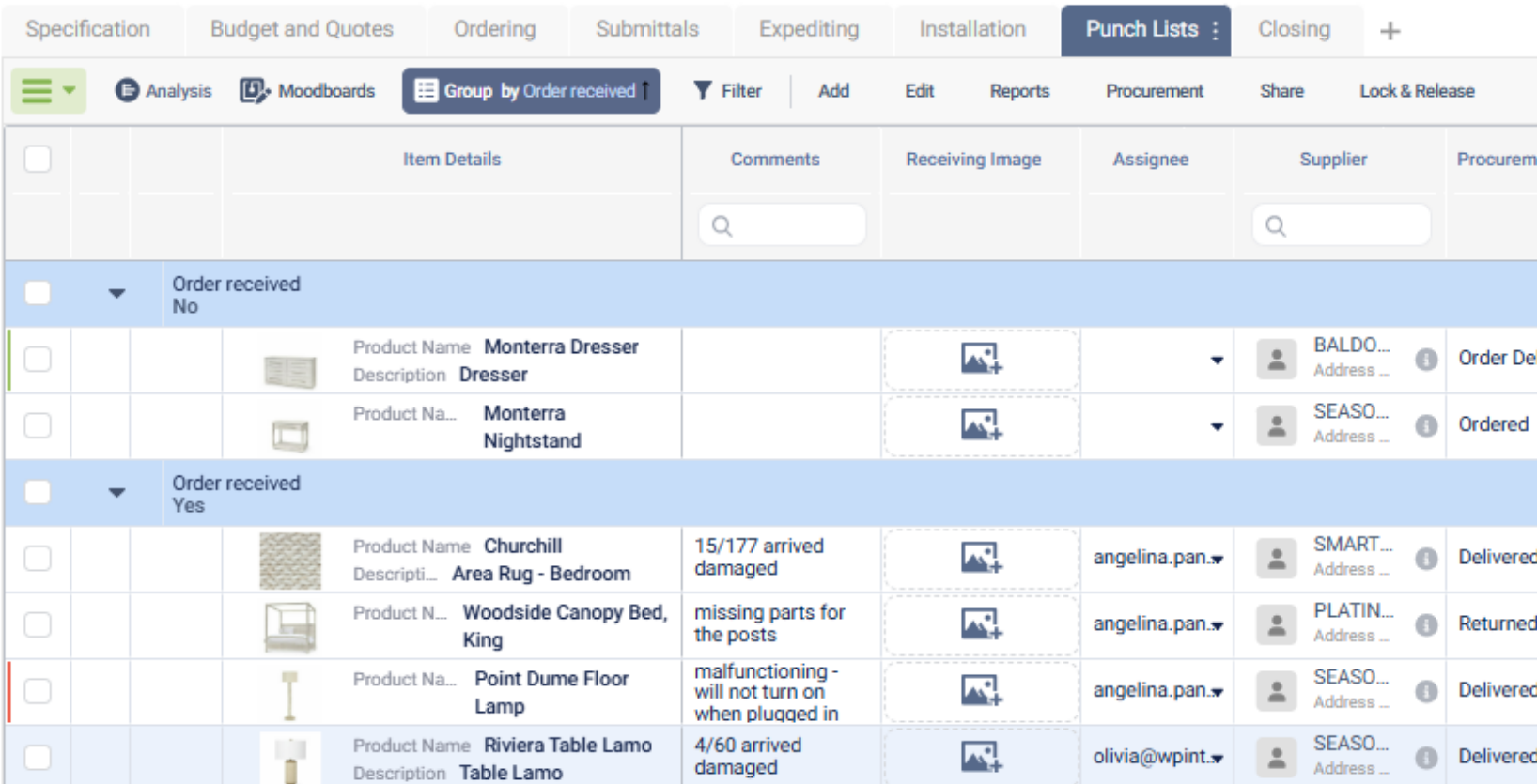
Instead of guessing or digging, your team has instant visibility into what was used, when, and where—ensuring consistency and saving hours on every new rollout.
For a deep dive into how to build a scalable and consistent standard, this guide to FF&E brand standards lays out the framework step-by-step.
2. FF&E Workflows That Break at the Handoff
The Problem:
Designers work hand-in-hand with end users to select FF&E. But once the list is finalized, the handoff to materials management happens through exported spreadsheets, emails, and phone calls. It’s clunky, slow, and error-prone.
The Cost:
-
Endless back-and-forth clarifying details.
-
Missed updates when specs change midstream.
-
Delays in ordering that ripple through project timelines.
“Our FF&E handoff still looks like a paper trail from 2005. Half the time, we’re duplicating data entry just to get procurement up to speed.”
The Ideal State:
A live platform where design and procurement teams work from the same data set. Selections automatically populate order forms, and updates sync in real time.
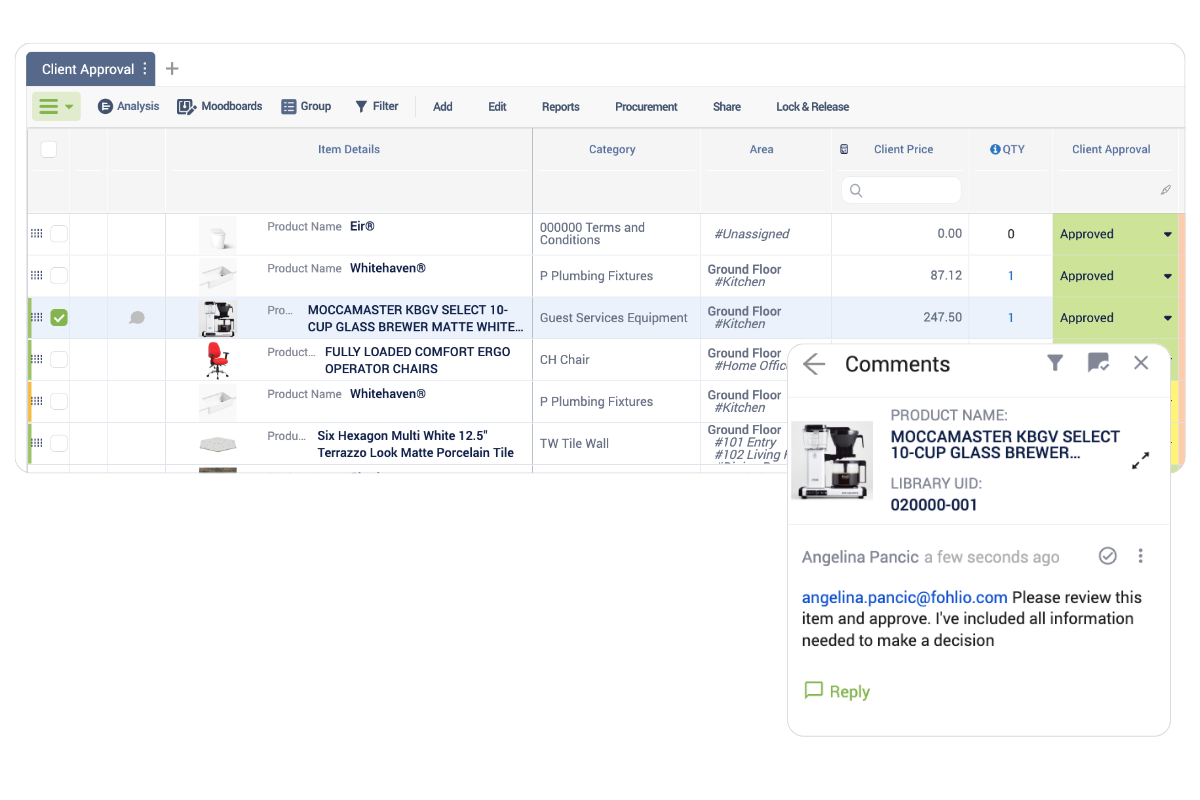
FF&E handoff becomes a non-event. Everyone stays aligned, and your timeline stays intact.
If you’ve ever had to clarify what "ganging chairs" or "COM" means to a new PM or vendor, you’ll appreciate this glossary of common interior design terms. It’s a quick fix for costly miscommunications.
3. Zero Visibility Into What’s Been Purchased
The Problem:
Designers specify the items. Procurement purchases them. But those systems rarely talk to each other. Once the spec is submitted, the design team is out of the loop.
“We designed for a specific tile—procurement swapped it for a cheaper option without telling us. The client noticed.”
The Cost:
-
Installed products that don’t match the design intent.
-
Blowback from clients who expect consistency.
-
Surprise budget overruns from unauthorized substitutions.
The Ideal State:
Design and procurement teams see the same status updates—what’s been ordered, delivered, delayed, or changed. Exceptions are flagged early.
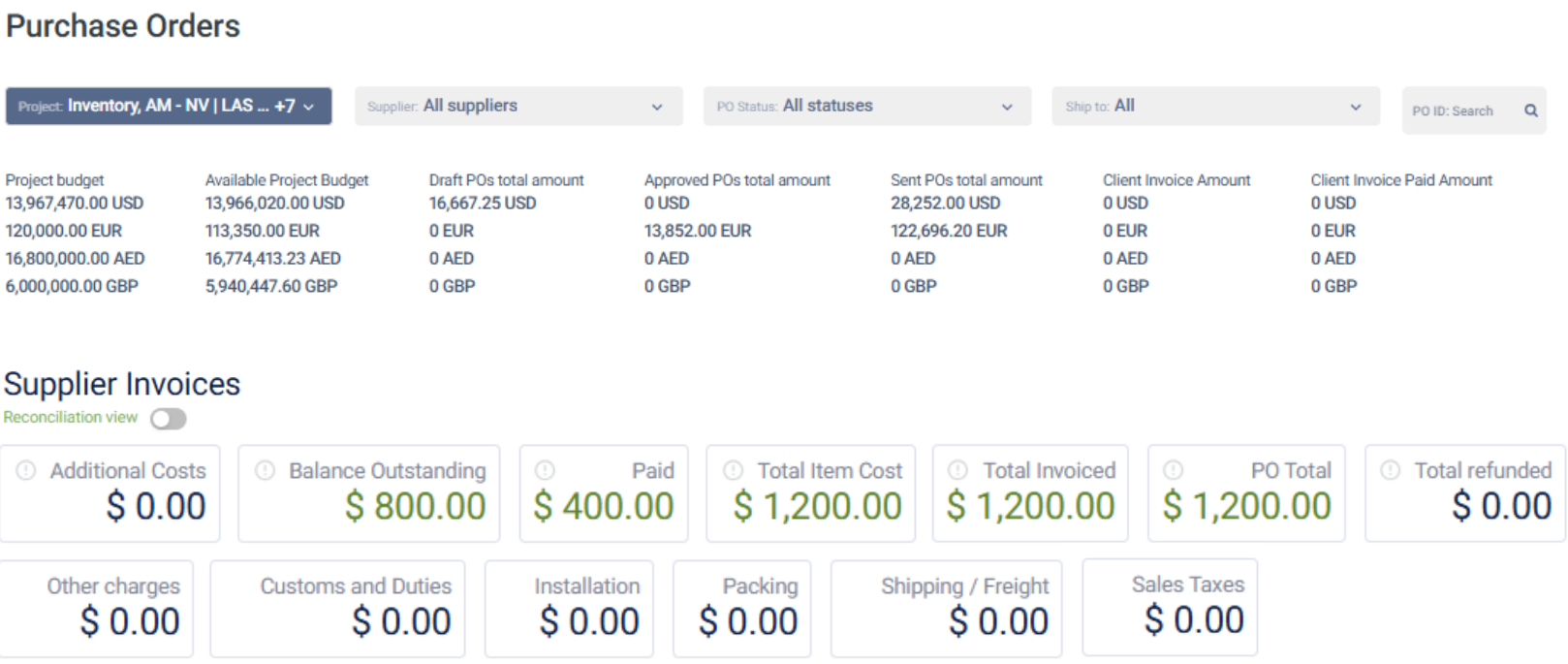 It’s not just transparency. It’s control. You ensure that what gets installed matches what was promised—down to the last sconce.
It’s not just transparency. It’s control. You ensure that what gets installed matches what was promised—down to the last sconce.
4. Death by Copy-Paste
The Problem:
Your firm probably uses the same soap dispenser, vanity package, or pendant light in 20 different projects. But every time, someone manually pastes it from an old spreadsheet, then hunts down the latest pricing or lead time.
“One project used the wrong faucet version because someone copied the 2022 spec. It had already been discontinued.”
The Cost:
-
Time wasted duplicating effort across teams.
-
Version control issues and outdated specs.
-
Increased margin for human error.
The Ideal State:
A master FF&E library with pre-approved components that can be dropped into any project—with current pricing and vendor info auto-filled.
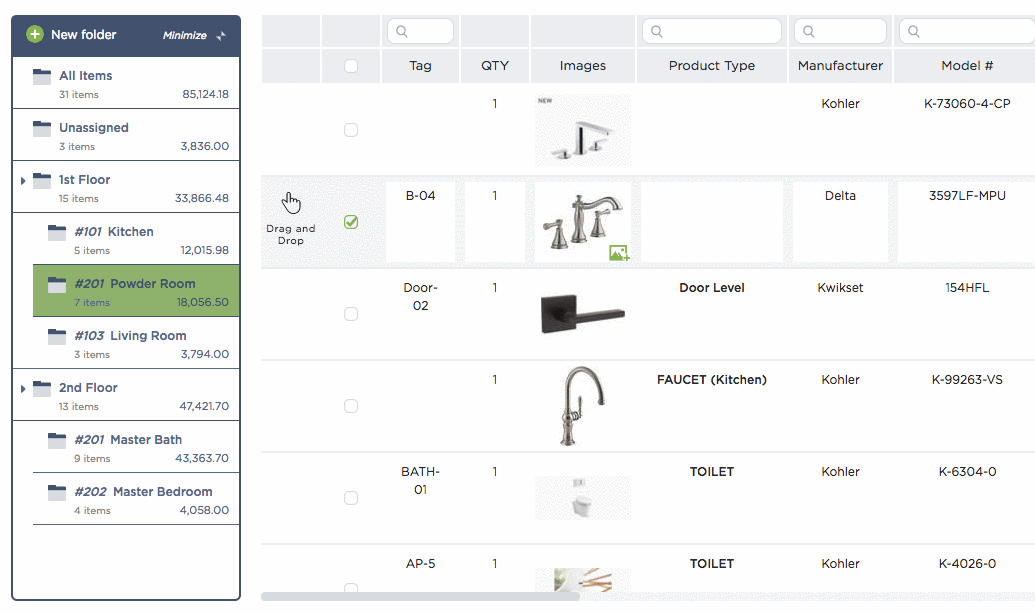
Repetition becomes your advantage, not your Achilles' heel. You scale without introducing risk.
5. Budget and Reporting That Doesn’t Tell the Full Story
The Problem:
Spec books, end-of-project reports, and budget breakdowns are stitched together manually. Construction and FF&E spend live in separate systems. Variance analysis? You’ll need another spreadsheet for that.
“We had to wait two weeks after install to understand if we went over budget. By then, it was too late to course-correct.”
The Cost:
-
Time-consuming report assembly.
-
Inaccurate data that undermines trust.
-
No real-time insight into budget health.
The Ideal State:
Live reporting dashboards that track FF&E status, spec progress, and real-time budget variance—by project, phase, or portfolio.
You don’t just know where your project stands—you know what needs attention now, not after the fact.
 If your reporting is still mostly reactive, this no-nonsense guide to cost analysis and budgeting lays out exactly how to build a system that surfaces financial red flags before they spiral.
If your reporting is still mostly reactive, this no-nonsense guide to cost analysis and budgeting lays out exactly how to build a system that surfaces financial red flags before they spiral.
6. Internal Resistance Slows Progress
The Problem:
Project teams want better tools. Procurement prefers to stick with what works (read: spreadsheets + ERP). Everyone agrees there’s a problem—but no one wants to be the first to switch.
“We could’ve fixed half our workflow with a platform we already trialed—but procurement didn’t want to learn a new system.”
The Cost:
-
Fragmented adoption that makes things worse, not better.
-
Double work when systems aren’t integrated.
-
Loss of morale and momentum among teams trying to improve.
The Ideal State:
Cross-functional buy-in, with one platform that respects the needs of design, procurement, and accounting. Integrations with ERP systems eliminate redundancy and preserve accuracy.
Adoption becomes effortless because the tool works for everyone—not just the design team.
Here’s what happens when design ops can’t scale with you—and how to fix it before you burn out your best people.
7. Collaboration Without the Right Tools Is Just... Email
The Problem:
You’re managing five internal departments, four vendors, three consultants, and a GC—all through email, Slack, and spreadsheets. There’s no role-based access, no shared dashboard, and no source of truth.
“We didn’t realize the client had approved a change until the tile had already been installed. No one forwarded the email.”
The Cost:
-
Communication breakdowns with real project consequences.
-
Poor accountability across teams.
-
Coordination chaos on fast-moving timelines.
The Ideal State:
A collaborative platform that includes role-based permissions, real-time updates, and shared visibility across stakeholders—internal and external.
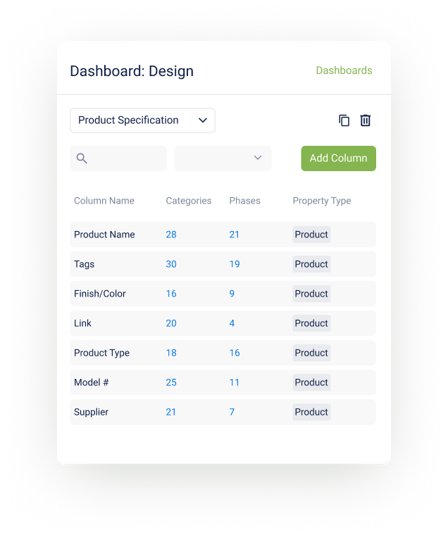
Everyone’s on the same page—because there is a page. One that’s always up to date.
What These Pain Points Are Really Costing You
Let’s be clear: This isn’t just about operational efficiency.
It’s about:
-
Delivering consistently excellent work at scale.
-
Keeping your team focused on design—not chasing data.
-
Protecting margins by avoiding delays, errors, and rework.
-
Future-proofing your firm as client expectations continue to rise.
If you're managing 10, 20, or 50 projects a year, small inefficiencies become major profit leaks. Fixing them isn’t a tech upgrade—it’s a business strategy.
Start here:
– The Interior Design Firm’s No-Nonsense Guide to Cost Analysis and Budgeting
– Why Fast-Growing Firms Break: Scaling Design Ops
– The Ultimate Interior Design Glossary for Hospitality & Commercial Projects
– How to Build FF&E Brand Standards
– FF&E, OS&E, CapEx and OpEx: A Quick Read Guide
You’ve mastered the art of design. Now it’s time to master the business of design.
Specify, procure, prototype, collaborate, and analyze at scale. Take on bigger projects with confidence and grow your firm with Fohlio. Schedule a demo or book a consultation with one of our account managers to explore these features today.
